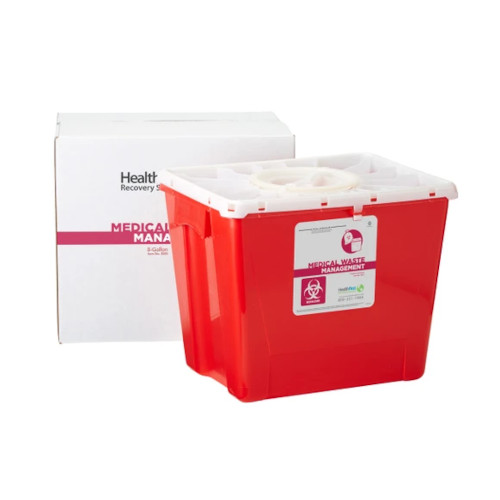Medical Waste Removal Excellence: Your Relied On Partner in Safe Biohazard Disposal
Medical Waste Removal Excellence: Your Relied On Partner in Safe Biohazard Disposal
Blog Article
Exploring Different Waste Disposal Options for a Cleaner Atmosphere
In the pursuit of a cleaner setting, the administration of waste disposal has actually emerged as an essential focal factor for sustainable growth. With a plethora of waste disposal alternatives available, varying from conventional land fill techniques to innovative waste-to-energy modern technologies, the selection of exactly how we manage our waste has far-reaching ramifications for our earth's well-being.
Recycling Techniques
Implementing effective reusing methods is critical in minimizing waste and promoting sustainability in our atmosphere. Reusing involves the process of converting waste products into reusable items to stop unneeded disposal.
Another crucial recycling approach is composting, which entails breaking down organic waste like food scraps and lawn trimmings right into nutrient-rich soil. This process not only diverts organic waste from land fills however also produces a valuable resource for horticulture and farming. Furthermore, upcycling is an innovative recycling approach that involves changing old or disposed of products right into products of higher top quality or value. By integrating these different recycling methods into our waste management methods, we can considerably lower our environmental footprint and move in the direction of an extra sustainable future.

Composting Techniques
Efficient waste monitoring techniques, such as reusing methods, lead the way for a cleaner atmosphere, and currently, moving the emphasis to 'Composting Techniques', we discover sustainable ways to decay organic waste for environmental advantage. medical waste removal.
Composting is an all-natural process that changes natural waste, like food scraps and backyard trimmings, into a nutrient-rich soil change. The key to successful composting exists in developing the right balance of eco-friendly products, such as fruit and veggie scraps, and brown materials, like dried twigs and leaves. These products decay with the help of microbes, breaking down the waste into important garden compost.
There are numerous composting techniques readily available to suit different needs. Standard yard composting involves layering organic materials in a bin or pile and consistently turning the combination to aerate it. Vermicomposting, on the other hand, uses worms to break down organic matter into garden compost (click here). For those with minimal area, indoor composting systems provide a hassle-free remedy. By making use of composting techniques, we can reduce the amount of waste sent out to land fills while developing an advantageous product for enriching soil and supporting plant development.
Incineration Advantages And Disadvantages
Incineration, as a waste disposal method, offers both benefits and disadvantages that merit mindful factor to consider in the world of sustainable waste management practices. On the silver lining, incineration can considerably decrease the volume of waste, minimizing the demand for landfill room and potentially decreasing greenhouse gas exhausts. Incineration likewise permits the healing of energy via the generation of power or warmth, adding to resource healing. The procedure can be used to ruin hazardous compounds, offering a secure approach for dealing with certain kinds of waste that may present threats to public wellness and the atmosphere if left untreated.
Nevertheless, there are noteworthy drawbacks to incineration. One significant issue is the prospective launch of hazardous pollutants into the air, such as dioxins, heavy steels, and particulate matter, which can have damaging results on human health and the atmosphere. Furthermore, the high preliminary financial investment and functional expenses of incineration centers pose economic difficulties, making it a much less cost-effective alternative compared to other waste management methods. Cautious surveillance and policy are necessary to reduce these unfavorable effects and take full advantage of the advantages of incineration as component of an extensive waste administration technique.
Land Fill Administration Methods
Land fills play an important function in waste administration and ecological preservation by giving a control system for the disposal of strong waste materials. Reliable land fill monitoring strategies are important to reduce environmental impacts and guarantee the long-term sustainability of these waste disposal websites. One vital approach is correct waste compaction to optimize using readily available area within the garbage dump click here (click here). By condensing the waste, the volume is decreased, enabling more waste to be accommodated over time.
Additionally, the application of daily cover techniques is essential in decreasing smells, stopping trash, and decreasing the attraction of parasites. Treatment the disposed waste at the end of every day assists to include odors and avoid potential ecological contamination. Furthermore, the tracking of garbage dump gas discharges and leachate levels is crucial in making certain that ecological standards are fulfilled which any type of potential dangers to surrounding ecosystems are minimized.

Waste-to-Energy Technologies
Among the ingenious methods to waste management involves taking advantage of Waste-to-Energy innovations to convert solid waste into usable energy sources. Waste-to-Energy (WtE) modern technologies incorporate a variety of procedures that intend to draw out power from waste materials through thermal, chemical, or biological means. This conversion process not only decreases the volume of waste that ends up in landfills but also produces useful energy sources such as electrical energy, heat, or biofuels.
There are several methods of Waste-to-Energy conversion, including gasification, incineration, and pyrolysis. Incineration includes burning waste at heats to produce heat and power. Gasification transforms waste right into a syngas, which can be utilized for power generation or chemical manufacturing. Pyrolysis breaks down organic materials using high temperature levels in the absence of oxygen, producing bio-oil, char, and gas.
Applying Waste-to-Energy innovations can help alleviate environmental issues connected with typical garbage disposal methods while simultaneously giving a renewable resource resource. Nevertheless, careful factor to consider must be offered to emissions control and making certain the sustainability of feedstock materials for these technologies to be genuinely advantageous for a cleaner environment.

Verdict
Finally, exploring various waste disposal choices such as recycling, composting, incineration, land fill monitoring, and waste-to-energy technologies is important for promoting a cleaner atmosphere - click here. Each method has its very own benefits and obstacles, yet by utilizing a combination of these techniques, we can work in the direction of lowering the amount of waste that winds up in garbage dumps and eventually add to a more sustainable future for generations to come
With a wide range of waste disposal choices offered, varying from standard land fill approaches to cutting-edge waste-to-energy modern technologies, the selection of how we manage our waste has significant effects for our earth's health. medical waste removal near me.Incineration, as a waste disposal technique, provides both advantages and downsides that warrant cautious consideration in the realm of sustainable waste management practices.Land fills play an essential role in waste management and ecological preservation by giving a control system for the disposal of strong waste products. By condensing the waste, the quantity is decreased, allowing for more waste to be suited over time
One of the ingenious methods to squander management entails using Waste-to-Energy modern technologies to transform solid waste into useful power resources.
Report this page